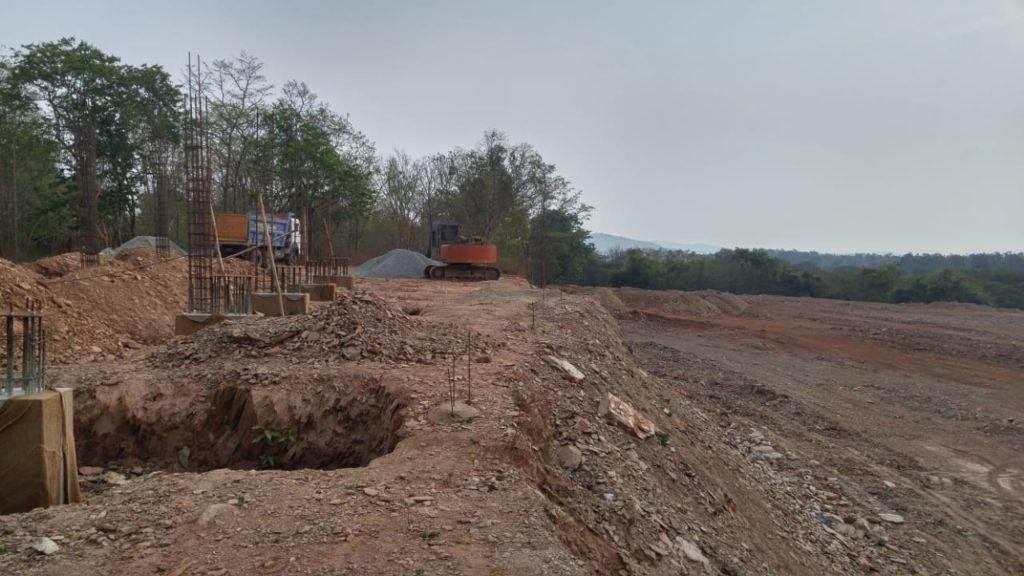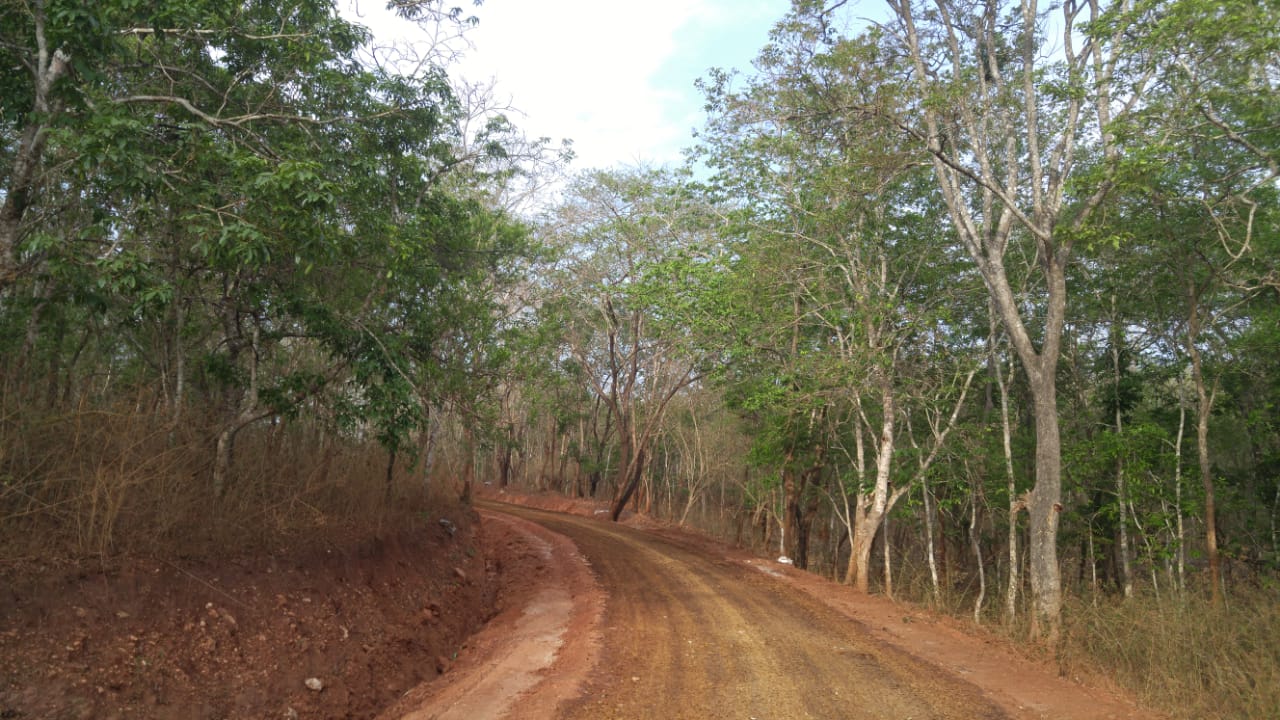By Meera Bhardwaj
Violations continue in Singanamane State Forest, Lakkavali Range of Bhadra Tiger Reserve where forest officials have been struggling to stop construction activities in the area that has been leased to Kuvempu University. This is a contiguous region in Bhadra witnessing frequent movement of tigers, leopards and other wildlife. The area is rich in prey animals including chital, sambar, gaurs and other herbivores.

Despite the Lakkavalli forest officials stopping civil works in April, efforts were made to take up works for installation of a ‘Chain link Mesh’ as part of the university boundary. However, on a tip off by activists, concerned forest officials visited the spot and stopped before any work could be taken up. The material for chain link mesh was procured and dumped in the campus road on Friday.

According to G Veeresh, wildlife conservationist, for the past two years, the university has been taking up construction activities again and again in the tiger reserve – in the pristine area of Singanamane forest. “They are on to constructing stadium and extending the buildings. Although the University has applied for forest clearances, they are yet to get permission. Not just this, they have even encroached on some area in this forest.”
In fact, activists in Chikkamagaluru have all along opposed any civil expansion activities by the University in the tiger reserve as they are not supposed to take any such activity under the lease agreement.
Bhadra Tiger Reserve officials have stopped all types of civil works in the state forest but unfortunately, works are taken up by the University at a moment’s notice. If any chain link mesh work is allowed, this will create more problems – cutting of the movement of tigers and other wild animals, adds Veeresh.
In fact, after a gap of many months, in May, wildlife came back in and around the verdant campus of the University after forest officials stopped the construction works of a stadium and other buildings. University staff also reported the sightings of an adult tiger one late evening near the Bio Sciences department where the big cat was seen crossing the newly built road.
Students and staff have reported seeing herds of spotted deer, sambar, barking deer, wild boar and other smaller mammals roaming around the campus.
If wildlife is still roaming around the campus despite the heavy construction activity, it is because of the richness of the habitat, officials say. “We cannot afford to have such activities here as it will adversely affect Lakkavali Range which has a very healthy population of tigers.”
Highly concerned over the building activities students say they were once proud of being part of this green campus. But the University’s indifference and intolerance towards nature and its teeming wildlife, they feel the tiger reserve may be affected and the campus may soon lose its forest ambience.
A lecturer preferring anonymity told Green Minute, “The University named after Kuvempu – a great naturalist, proudly claimed before the UGC that they are one with nature and are living harmoniously with wildlife. But alas! When you look at the ground reality, it is the opposite. They have felled hundreds of trees for building the road while they have concretized a water hole completely. A whole patch of verdant forests was razed to the ground to add buildings and that seems to be the only way to get money from the state government.”
Wildlife thrives in this area with a good number of tigers in this range. In fact, the entire belt and the surrounding reserve forests in Bhadravati and Ummbalebailu
support a good number of tigers and prey animals, a forest official says expressing his concern.


Utter disgraceful on the university actions. This must be stopped Now
Work is stopped? Good, but these drivers of degradation will come back in a jiffy, if due diligence is not followed by the activists. Who allotted this Protected area to Kuvempu university? Photos show enough damage is already done and 100s of trees /valuable greenery has already been lost. Its a good sign that flora and fauna are returning.